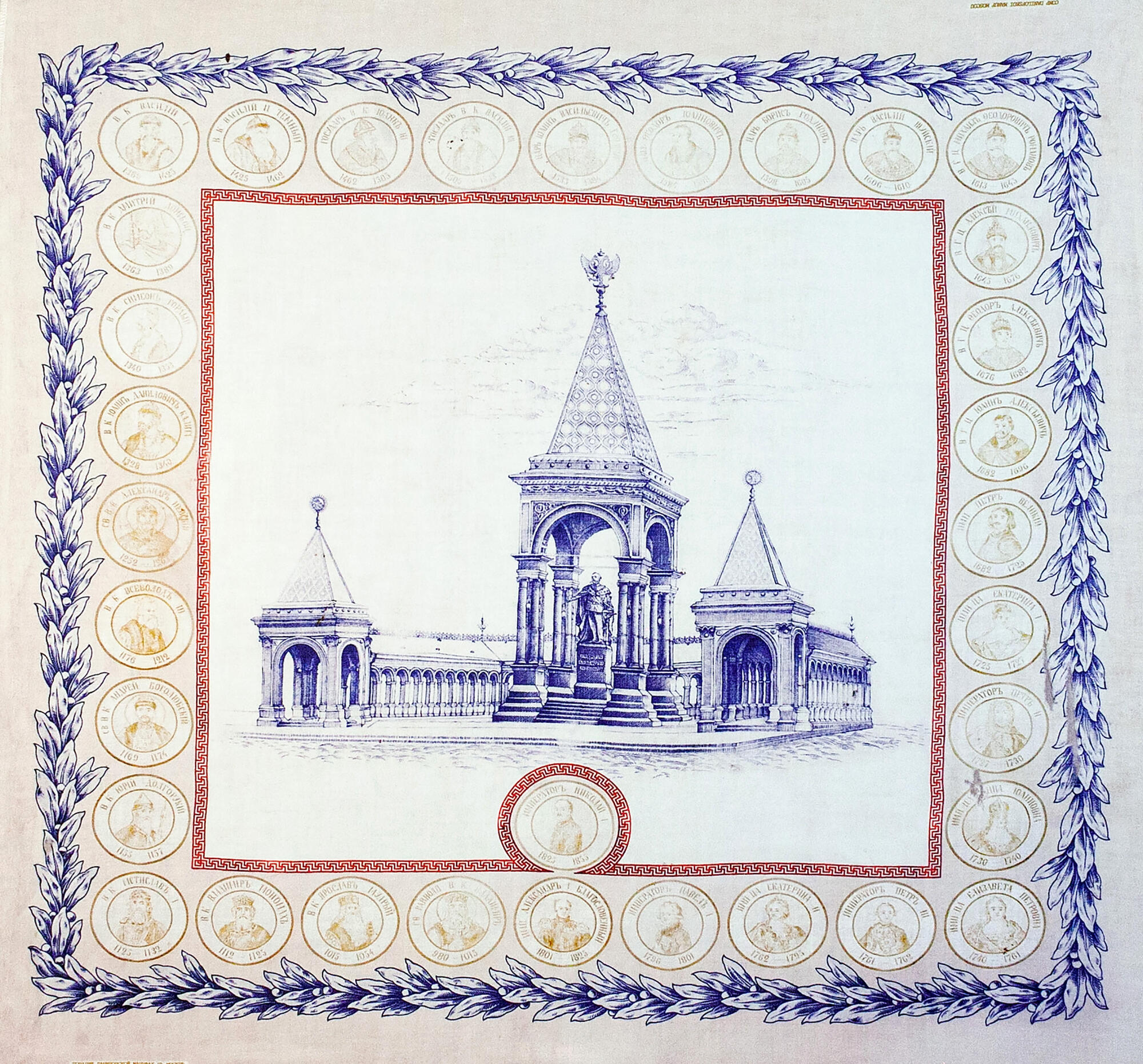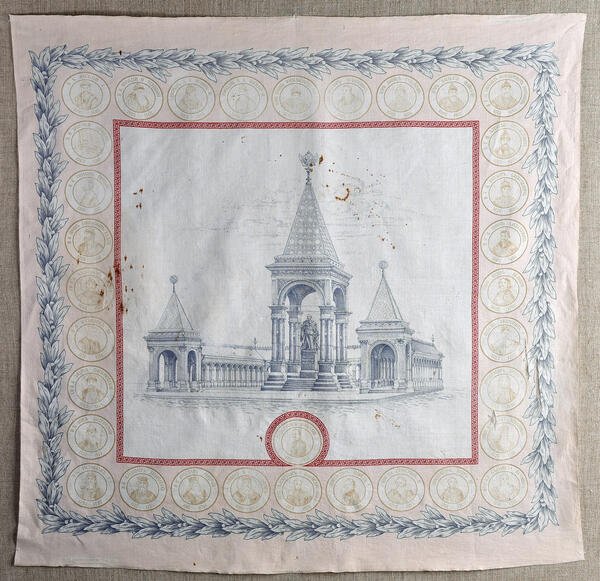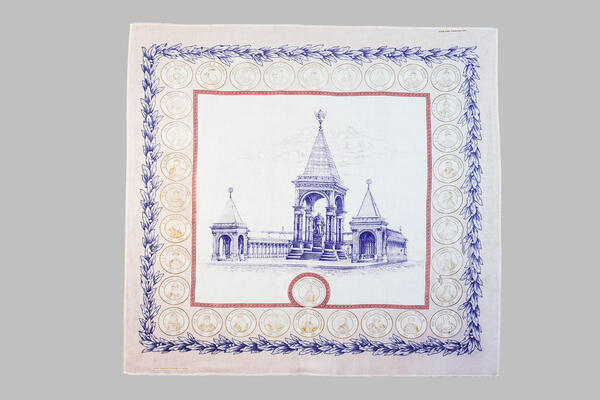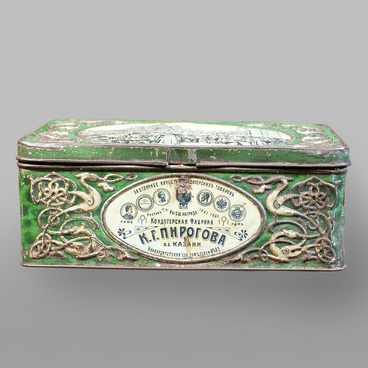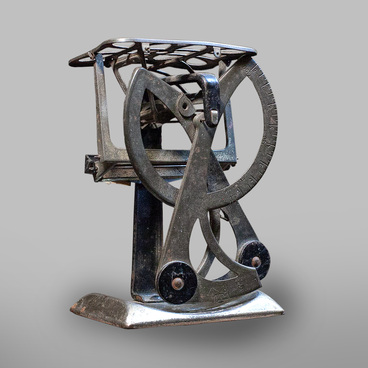The “House of Romanov and Vyatka” section features a unique kerchief with images of medallions depicting the rulers of Russia and a monument to Emperor Alexander II. The kerchief was designed to commemorate a significant date in the history of the Russian Empire. In 1913, the Russian Empire celebrated the Tercentenary of the House of Romanov.
The kerchief from the museum’s collection is a unique artifact of a bygone era, reminding visitors that the Vyatka Governorate participated actively in the celebration of the Romanov Tercentenary.
The monument to Alexander II, depicted in the center of the kerchief, was opened in 1898 near the Small Nicholas Palace on the slope of Borovitsky Hill, facing the Moscow River.
On March 8, 1881, a week after the assassination of Alexander II, the Kremlin suggested erecting a monument in memory of the Emperor. In 1893, the monument was founded in the presence of the new Emperor and members of the imperial family.
The monument to Alexander II was a memorial complex, consisting of a six-meter bronze statue of the emperor, a canopy above it, and a colonnade. The statue was made of dark bronze and depicted Alexander II in full height, wearing a general’s uniform and a purple mantle, and holding a scepter. Inscribed on the square pedestal were the names of Nicholas II, Grand Duke Sergei Alexandrovich, and his wife Elizabeth Feodorovna, and the inscription “To Emperor Alexander II by the love of the people”.
The canopy was lined with Finnish granite and decorated with bronze and gilding. The roof was fitted with gilded bronze sheets filled with dark green enamel and crowned with a double-headed eagle. The story of the emperor’s life was written on the dome of the canopy. On three sides of the statue, there was a gallery with arches. On the gallery’s vaults, there were 33 mosaic portraits of Russian rulers — from Vladimir the Great to Nicholas I. The mosaics were made in Venice based on the sketches of Pavel Zhukovsky. Along the frieze of the colonnade, there was an inscription,
The kerchief from the museum’s collection is a unique artifact of a bygone era, reminding visitors that the Vyatka Governorate participated actively in the celebration of the Romanov Tercentenary.
The monument to Alexander II, depicted in the center of the kerchief, was opened in 1898 near the Small Nicholas Palace on the slope of Borovitsky Hill, facing the Moscow River.
On March 8, 1881, a week after the assassination of Alexander II, the Kremlin suggested erecting a monument in memory of the Emperor. In 1893, the monument was founded in the presence of the new Emperor and members of the imperial family.
The monument to Alexander II was a memorial complex, consisting of a six-meter bronze statue of the emperor, a canopy above it, and a colonnade. The statue was made of dark bronze and depicted Alexander II in full height, wearing a general’s uniform and a purple mantle, and holding a scepter. Inscribed on the square pedestal were the names of Nicholas II, Grand Duke Sergei Alexandrovich, and his wife Elizabeth Feodorovna, and the inscription “To Emperor Alexander II by the love of the people”.
The canopy was lined with Finnish granite and decorated with bronze and gilding. The roof was fitted with gilded bronze sheets filled with dark green enamel and crowned with a double-headed eagle. The story of the emperor’s life was written on the dome of the canopy. On three sides of the statue, there was a gallery with arches. On the gallery’s vaults, there were 33 mosaic portraits of Russian rulers — from Vladimir the Great to Nicholas I. The mosaics were made in Venice based on the sketches of Pavel Zhukovsky. Along the frieze of the colonnade, there was an inscription,
